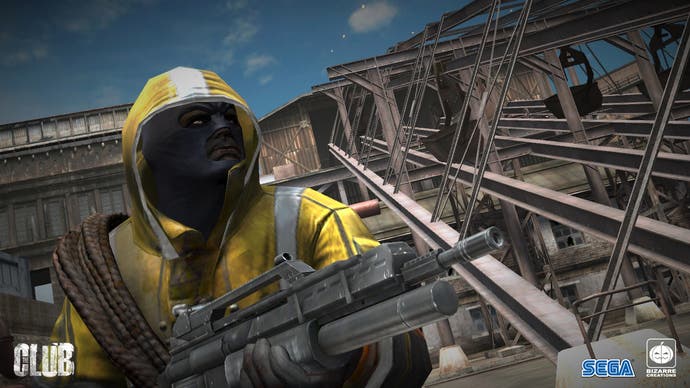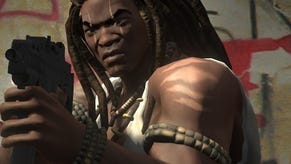The Club
Better than the Ploughman's.
What dawns on you towards the end of that play-through is just how well-structured and designed each environment really is. In one Siege level in the final war-torn setting I died because I was trying to strafe backwards and left out of a doorway into the play area away from a rocket-firing enemy and I became snagged on the doorframe. Much as I cursed, the overwhelming feeling was of just how unusual an experience that was: to create a shooter - third- or first-person - where blind movement is so rarely punished in complicated environments is a testament to considered layout.
Bizarre's subtlety of execution will probably be lost on people who observe it from afar. It's no discredit to them; The Club just isn't a game that looks amazing in screenshots or video, or necessarily leaps off the page, but it's actually composed of moreish tasks that you'll want to revisit, with routes signposted in an unobtrusive but routinely effective manner and core controls and reward systems that so seldom punish you for faults not your own that it's evidently eye-opening. And while you can complete the single-player game in under four hours, it's the hours after that which define the experience.

The inclusion of leaderboards is an obvious but compelling decision. There's one for each task, and target scores for each of the four difficulty levels - a bit like PGR's Steel-to-Platinum range of medal objectives. The Tournaments of the single-player campaign are great, with scoreboards ala Mario Kart where points are awarded based on relative finishing totals rather than times. But you can replay anything you've done once it's unlocked in the Single Event mode, and I've actually spent more time here than anywhere else. I had the good fortune to review the game when no one else was playing, so I could easily earn the (Xbox 360) Achievements for making the top 5,000 or 100,000 in a given task, but hopefully SEGA's marketing will put the game in the hands of many thousands so they're worth competing to attain on a proper playing field.
But SEGA won't be able to ball out the ad-men if it doesn't sell, because its real problem is that it isn't a compelling spectacle. Enemies fall like granite tea towels when they might explode across the level like John Woo extras, and while the levels are superbly constructed from a technical standpoint - and certainly painstakingly detailed - they do all settle into a grey-brown rust explosion of relative dreariness. Maybe this is because it's important to be able to define your targets quickly - it certainly is - but the fact Call of Duty 4, Halo 3, Half-Life 2 and countless very good others manage this without boring the eyes is an indictment of the artistic direction. There are set-pieces, but they're old hat next to Modern Warfare.

The Club will also struggle to unseat Infinity Ward's opus at the top of the online gameplay charts, but what it does offer for multiple players is very arresting. Online options are there for basic competitive speed-run modes (in Score Match, the first to hit a target scores wins, but Kill Match sets the target in enemy numbers, resulting in a very different dynamic), while the Team modes worked best for us. Sharing the Siege experience - particularly when the other team is human-controlled - is brilliant, and you have to admire a game that includes "Team Fox Hunt" (after all, it is about taking down the other team's fox - surely they deserve it poor old chickens etc).
If you prefer to play with people sat on your lap, there are also split-screen and network options. Or you could swap the pad between yourselves to try and beat a particular time. Gunplay mode lets you create playlists of levels you've unlocked, allowing you to argue with Bizarre's pacing decisions. There's a welcome variety in length and environment design. Smaller levels like Downtown Dash (see it conquered on Eurogamer TV) couple neatly to frantic gambling in rooftop Survivor missions - judging when best to race outside the boundary for a health-pack before diving back in before you explode.
Overall, The Club is brilliantly immediate, logical and rewarding in ways that the PGR games always were and are, and it does for the third-person shooter what no one else has even bothered trying to do: moving it closer to the 2D shoot-'em-ups of old in a manner that appeals anew. In terms of Bizarre's canon, it is what PGR was for cars: familiar concepts designed to be enjoyed over and over rather than gasped at and discarded.










